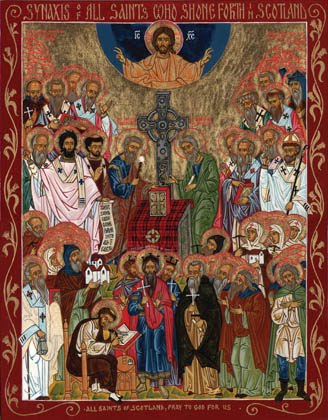| Acca | |
|---|---|
| Abbot & Bishop | |
| Born | c. 660 |
| Died | 20 October 740 or 742 |
| Honored in | Roman Catholicism; Anglicanism;Eastern Orthodoxy |
| Majorshrine | Hexham Abbey, Northumberland(part of cross survives) |
| Feast | 20 October |
Acca (b c. 660 – 740 or 742), Bishop of Hexham.
Born in Northumbria, Acca first served in the household ofBosa, the future Bishop of York, but later attached himself to Saint Wilfrid, possibly as early as 678, and accompanied him on his travels. On the return from their second journey to Rome in 692, Wilfrid was reinstated at Hexham and made Acca abbot of St Andrew's monasterythere. After Wilfrid's death in 709 Acca succeeded him as bishop.
Acca tackled his duties with much energy, in ruling the diocese and in conducting the services of the church. He also carried on the work of church building and decorating started by Wilfrid. He once brought to the North a famous cantor named Maban, who had learned in Kent the Roman traditions of psalmodyhanded down from Gregory the Great through Saint Augustine.
He was also famous for his theological learning; his theological library was praised by Bede. He was known also for his encouragement of students by every means in his power. It was Acca who persuadedStephen of Ripon (Eddius) to take on the Life of St. Wilfrid, and he lent many materials for the Historia ecclesiastica gentis Anglorum to Bede, who dedicated several of his most important works, especially those dealing with Holy Scripture, to him.
For reasons now unknown Acca either withdrew, or was driven from, his diocese in 732. Some sources say he became bishop of Whithorn in Galloway, while others claim he founded a see on the site of St. Andrews, bringing with him relics collected on his Roman tour. He was nevertheless still buried at Hexham. Two finely carved crosses, fragments of one of which still remain, were erected at the head and foot of his grave.
He was revered as a saint immediately after his death. His body was translated at least three times: in the early 11th century, by Alfred of Westow, sacrist of Durham; in 1154, when the relics of all the Hexham saints were put together in a single shrine; and again in 1240. His feast day was 20 October. The translation of his relics was commemorated on 19 February.
The only surviving writing of Acca's is a letter addressed to Bede and printed in his works (see also Raine below).
References
- Raine, J., Priory of Hexham (Surtees Society, London 1864), containing the text of Acca's letter to Bede and other relevant material on his life
- Stanton, Richard, A Menology of England and Wales (London, 1892), 507
- Simeon of Durham, and Ælred's On the Saints of Hexham, both in the Rolls Series
- Eddius, Life of Wilfrid (ed Raine, J.,Historians of the Church of York, London 1879–94; ed Levison, W., in Mon. Germ. Hist., Scriptores Rerum Merovingicarum, vol. 6 (1913); or ed B. Colgrave, Cambridge 1927)
- Bede, Ecclesiastical History of the English People (many editions)
- Hunter Blair, P., The World of Bede (1970)
- Kirby, D. P. (ed), St Wilfrid at Hexham (1974)
- External links
- Hexham Abbey webpage
- Prosopography of Anglo Saxon England entry for Acca
- Catholic Online entry for St Acca
- Catholic Encyclopedia entry for St Acca
- Attribution


No comments:
Post a Comment